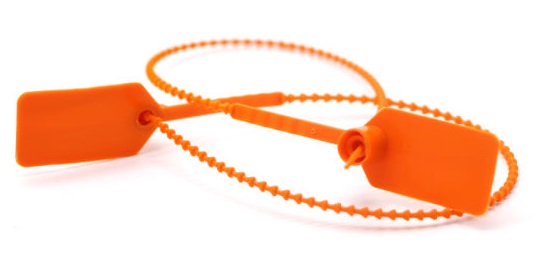
What Are Tamper Evident Security Seals?
Security seals provide a vital purpose. This article will explain their function, give you a broad concept of how to use them, describe how they are categorised, and even demonstrate some of the many varieties. It will be simple for you to decide which tamper evident security seals are best for your application.
Tamper-evident security seals: what are they?
To protect the integrity of the package that the seal is attached to, tamper evident seals are typically used. Visual proof of any effort to open or alter that package is provided by security seals. A tamper evident seal stops unauthorised opening and tampering in the end.
A lock is not even a top-tier tamper evident seal. The seal is usually made to only be used once before being destroyed. Whether you find out about the attempt or the receivers do, if tamper evident security seals on any parcels show that someone has tried to open them, you can launch an investigation to find the offender.
There are several types of tamper-evident seals. Even better, you may have a tamper-evident seal with your brand printed on it. The characteristics of a tamper-evident feature vary by kind. Some have tamper-evident elements like holes or materials that shatter or rip when the box is opened. Others feature unique adhesives that, if the seal is broken, leave a residue or other obvious proof. Others still utilise high-strength metals and can only be removed with specialised equipment.
Tamper-evident security seals: how to use
It’s a simple procedure that often entails putting the seal on a package or item in a certain way to ensure its efficacy. The main procedures for utilising a security seal vary depending on the kind.
Put the seal on.
Make sure the area you’ll be sealing is clean and dry before applying the seal. Place the seal over the entrance or access point you want to secure after that. To engage any adhesive or locking mechanisms that are a component of the seal, press down hard on it. Before applying some seals, you might need to peel off a protective backing or other covering.
Check the seal
Verify that the seal is firmly in place and that any locking mechanisms are activated once it has been applied. Check to make sure the seal is secure and that there are no alterations or damage to the product. The legitimacy of some seals may be confirmed using extra elements like serial numbers or unique identifiers.
Keep an eye on the seal
Watch the seal over time to make sure it holds up and that there are no telltale signs of tampering or damage. Take the necessary steps to investigate and remedy any issues or concerns you may have.
It’s crucial to adhere to the guidelines listed with the particular security seal you’re employing.

How to choose the correct seal?
Think about your needs and the characteristics required to reach your goals. This will involve a variety of elements, including:
Seal type
Compare and contrast the many security seals available, such as tamper evident seal stickers, labels, tapes, and bags. This will need taking your industry into account. For tamper evident sealing on foley catheters, a tamper evident seal for food may not always be the best option.
Security level
As you’ll see in the section below, you have a few options. Consider using a bolt seal if you want a high level of security. A seal that supports customised information, like a serialisation tamper evident seal, is another option. Initiatives to secure the supply chain must include serialisation. Each package has a special serial number affixed to it. Following that, this number is entered into a database, enabling both makers and customers to follow the package’s progress over its whole life.
Industry requirements
Does your sector have any particular standards for tamper-evident security seals? For instance, ISO 17712 approved high-security seals are frequently required for international goods shipments.
Material
Seals that are tamper-evident might be constructed of paper, metal, or plastic. Based on aspects like durability, weather circumstances, and the sort of package you’re sealing, think about which material is best suited for your application.
Application Strategy
Application techniques range from self-adhesive to bolting depending on the sort of tamper-evident seals you’re employing. If you want the seal to be easy to apply, think about which approach is ideal for you. Do you want it to come off easily? Or is the degree of security the seal offers more important than the manner of application? You alone are the only one who can decide these issues by weighing them against other factors.
Cost
Depending on the kind, composition, and characteristics, tamper evident security seals can cost a variety of amounts. In addition to making sure the seals you select are functional for your purposes, take into account your budget and the amount you are ready to spend on security measures.
Overall, choosing the proper seal necessitates carefully taking into account both your unique circumstances and the amount of protection you want. You may contribute to ensuring the security, reliability, and authenticity of your packages by picking the appropriate seal.
